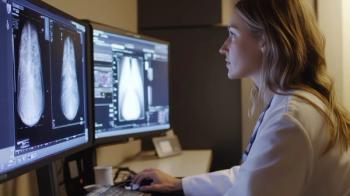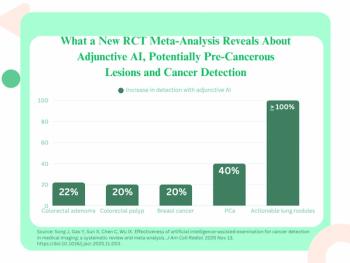
Buried alive under the rubble of DRA
As imaging centers across the country fall behind on equipment payments, they are getting calls from workout groups. We’re not talking gym memberships here. These groups try to recoup lost revenues from notes in default and are being used more than ever in the radiology finance world. During the past few months, I have spent a good portion of my time speaking to finance vendors involved in attempting to salvage centers. It is frightening to see the washout of once-profitable centers, as they fall victim to the draconian cuts in Medicare reimbursement resulting from the Deficit Reduction Act.
As imaging centers across the country fall behind on equipment payments, they are getting calls from workout groups. We're not talking gym memberships here. These groups try to recoup lost revenues from notes in default and are being used more than ever in the radiology finance world. During the past few months, I have spent a good portion of my time speaking to finance vendors involved in attempting to salvage centers. It is frightening to see the washout of once-profitable centers, as they fall victim to the draconian cuts in Medicare reimbursement resulting from the Deficit Reduction Act.
But more than reimbursement cuts are hurting outpatient imaging centers these days. Payers are closing panels, requiring three or more modalities and ACR and multifacility agreements. This makes it almost impossible for the single-modality mom-and-pop operation to successfully contract with payers. Because many in the radiology industry were myopic about the effects of the DRA and its repercussions in private payer reimbursements, they ignored the significance of payers' shift to utilization management companies and much-needed compliance standardization.
Many new centers are feeling the brunt of the DRA, utilization management, and closed panels. Opening an outpatient center 12 months ago meant withstanding only a few bumps in the road, if billing and marketing were done correctly. Hitting the breakeven point came sooner, because the centers' revenues were 15% to 20% higher and payer contracts were more accessible. Today, the breakeven point is much harder to achieve inside of six to eight months - I am seeing it happen at 12 to 14 months. That same center must perform 15% to 20% more volume out of the gate and wait months in the hopes of securing a contract. This means that anticipated cash flow requirements are higher in order to achieve the breakeven point. As a result, defaults occur.
Centers older than 12 months are troubled because many have been poorly run and could, in the past, afford to make service, billings, and general management mistakes and still post a profit. Today, these businesses don't have the cushion to make mistakes or to miss their equipment payments.
The numbers are staggering. Having polled five large finance vendors of late, I learned that 10% to 12% of their portfolios are in default or at risk. They expect that number to grow as high as 18% by January 2008. Conservatively, there are 8000 to 10,000 radiology centers across the country. Using a 10% default rate, this equates to about 800 radiology centers currently in workout groups that are in the process of being shut down, sold, or consolidated.
For the first time, I see used equipment vendors with excess inventory as they pull gear from failing centers. Price compression in the used equipment market due to this surplus inventory is increasing monthly. This places greater stress on new unit pricing. Equipment sold 16 months ago cannot keep up with depreciation, and many centers are finding themselves upside down.
When can vendors expect to see the light at the end of the tunnel? The answer lies with the ability of a workout group to become both creative and realistic in finding the right solution. Many in the industry view this disaster as an opportunity.
Some long-standing imaging centers, hospitals, and radiology groups view these failures positively as a long-overdue course correction. Gone are the days of uncontrolled, explosive growth in the outpatient industry. Now there is a chance to expand, eliminate competition, and capitalize on market failures. Regaining business lost to physician-owned MRs and CTs is an example. These offices are really under the gun because payers are scrutinizing authorization and requiring both multimodality equipment and ACR accreditation. Reductions in reimbursement, coupled with the restriction in self-referral by payers, have left many physicians in the red.
Non-physician-owned centers struggling to make it, however, need relief. They need a break from equipment payments for a few months to restructure, correct deficiencies, or find joint-venture partners that bring accretive value to the center.
But this should be done cautiously. In some cases, help may only extend a bad business plan. Then all parties will have to face the grim reality of the situation. In that case, it would be preferable to close down the center or find a suitable buyer.
Those familiar with the Apollo 13 disaster know that it takes a team to fix a catastrophe. The astronauts never would have made it home had it not been for their version of a workout group coaching them from Houston.
Today's workout groups have to be just as creative, intuitive, and sharp to finance vendors, ultimately recoup losses, and recreate a smart and sustainable business model for future outpatient centers to grow upon.
Steven R. Renard is a diagnostic imaging and radiology industry consultant with nearly 15 years of related experience. He is a published author and industry speaker.
Newsletter
Stay at the forefront of radiology with the Diagnostic Imaging newsletter, delivering the latest news, clinical insights, and imaging advancements for today’s radiologists.



























